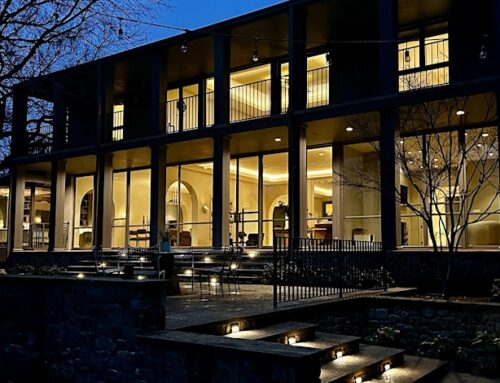“It’s a complex puzzle — one thing affects another thing,” said District 2 Board Trustee Jack Lowe recently after meeting with parents from Pershing, Kramer and Preston Hollow elementaries. To complicate things even further, he says: “Different parents want different things.”
He’s talking about DISD’s proposed attendance boundary changes in our neighborhood— changes necessitated by the 2002 bond program and designed to relieve overcrowding — which were unveiled at a Hillcrest High School meeting by district representatives in early November.
There are two sets of boundary changes being considered. The first, to be voted on later this month, concerns changing the eastern edge of the Kramer and Preston Hollow attendance areas when McShan Elementary, a new DISD school, opens in the fall.
But it’s the second set of changes — which won’t be voted on until January 2006 — that has neighborhood public-school parents most concerned. Parents from Kramer and Preston Hollow believe the proposed changes will have a negative impact on their schools, while Pershing parents say they’re excited about the changes potential for improving school programs.
Home + Heritage has taken a closer look at issues affecting each of these three schools.
KRAMER ELEMENTARY
Esther Donald’s son, Max, is a second-grader this year at Kramer Elementary. The past two years, Max has participated in the science fair, the chess team and the basketball team. He gave his first public speech, was admitted to the TAG program, and to his parents delight, started writing for the school newspaper.
All in all, Donald says her son is thriving at Kramer, and she and husband Mark couldn’t be happier about their decision to send him there. In fact, they hope to send their daughter Lily there in two years.
But all that might change. The Donalds live in an area that, in 2006, could become part of Pershing Elementary’s attendance boundaries. It’s part of an attempt by DISD relieve overcrowding at Kramer and help out Pershing, which has grown increasingly smaller in numbers.
Donald realizes that her child’s school is overcrowded, but she doesn’t like the idea of her family having to pack its bags. It’s not that she thinks Pershing is an inferior school. But, “as parents,” she says, “we’ve put down stake in Kramer. We feel intensely that we are a part of the Kramer neighborhood.”
The area that would be affected by boundary changes is between
“That’s important because all of the things that attract people to Kramer — the math team, the chess team, the school newspaper — the PTA has helped to fund, staff and drive these extra-curricular activities,” she says. “Moving 40 kids from Kramer to Pershing is not going to save Pershing. What it will do is decimate the Kramer PTA.”
PERSHING ELEMENTARY
Of course, parents at Pershing beg to differ. Their school, they say, could use an influx of not only numbers, but numbers with the kind of enthusiasm that parents currently show toward Kramer.
“Pershing is in a different situation from Preston Hollow and Kramer because they want something different from the proposals. Pershing finds them acceptable,” says Pershing PTA President Susan Gross. “The primary concern of Pershing is to make sure our school has the opportunity to be a neighborhood school and a strong neighborhood school — just like the others in our area.”
In past years, the number of students at Pershing has declined. A map of the school’s current attendance boundaries shows that Pershing’s result in a very narrow and vertical area, which Gross says seems to keep the school from feeling like it has a strong neighborhood core — something its parents and faculty desperately want.
“We are really hoping a larger boundary will give people the opportunity to come to Pershing,” Gross says. “It’s hard to gain neighborhood interest with a long skinny attendance boundary.”
Once of the biggest concerns, she says, is that because of its smaller enrollment figures, Pershing may begin to lose important programs such as art, music and TAG. While these programs are available to any DISD school, it’s a simple problem of manpower, Gross says.
“You have to have a certain number of students, because with a smaller number of students you have a smaller number of teaching units.
“I understand why the other schools are upset, but they have to realize changes have to be made to benefit the most students.”
PRESTON
HOLLOW ELEMENTARY
When the Bittner family moved to our neighborhood 10 years ago, they didn’t want to send their kids to Preston Hollow Elementary. Explains Joe Bittner: “We were never comfortable.”
But two years ago, they changed their mind.
“We saw the changes and the prospect of changes coming,” Bittner says.
Now, twin daughters Lauren and Ellis are in first grade, and his son Davis is a fourth-grader.
The Bittners are active in the PTA, and Joe helps with the Dad’s Group at Preston Hollow. They’ve spent countless hours raising money for and improving the school’s grounds; in fact, the Bittners just bought the naming rights to the school’s baseball field at this year’s auction.
Like the Donalds at Kramer, the Bittners have invested a lot of time and money into their children’s school only to find out that, with the proposed attendance boundary changes, their area could be rezoned to Pershing in 2006. The area where the Bittner’s live is in the northern region of Preston Hollow’s current attendance zone. According to Bittner, about 15 Preston Hollow Elementary families reside in that area.
“We’ve made a huge financial and personal commitment to make [Preston Hollow Elementary] part of our neighborhood and community,” Bittner says of his and many of his neighbors’ efforts.
What happens next remains to be seen. Parents from Kramer, Pershing and Preston Hollow continue to meet with DISD representatives to make their concerns known.
Kramer and Preston Hollow parents may take a page from Stonewall Jackson Elementary parents. Last year, parents at that school in
Last month, representatives from the three schools met with DISD to discuss the issue. That encounter resulted in DISD promising to reconsider the proposed boundaries, giving Bittner reason to believe Preston Hollow and Kramer parents may get the same response Stonewall parents did.
“DISD said they understood our concerns and said they would make an effort to get [the boundaries] changes back,” he says. “I think everything will work out.”






